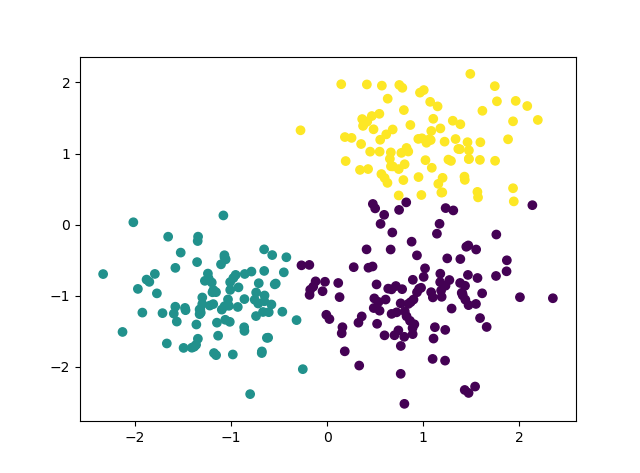Classical machine learning algorithms implemented with pure numpy.
The repo to help you understand the ml algorithms instead of blindly using APIs.
- Introduction
- Directory
- Algorithm list
- Classify
- Perceptron
- K Nearest Neightbor (KNN)
- Naive Bayes
- Decision Tree
- Random Forest
- SVM
- AdaBoost
- HMM
- Cluster
- KMeans
- Affinity Propagation
- Manifold Learning
- PCA
- Locally-linear-embedding (LLE)
- NLP
- LDA
- Time Series Analysis
- AR
- Classify
- Usage
- Installation
- Examples for Statistical Learning Method(《统计学习方法》)
- Reference
- Perceptron
For perceptron, the example used the UCI/iris dataset. Since the basic perceptron is a binary classifier, the example used the data for versicolor and virginica. Also, since the iris dataset is not linear separable, the result may vary much.
Figure: versicolor and virginica. Hard to distinguish... Right?
Perceptron result on the Iris dataset.
- K Nearest Neightbor (KNN)
For KNN, the example also used the UCI/iris dataset.
KNN result on the Iris dataset.
- Naive Bayes
For naive bayes, the example used the UCI/SMS Spam Collection Dataset to do spam filtering.
For this example only, for tokenizing, nltk is used. And the result is listed below:
preprocessing data...
100%|#####################################################################| 5572/5572 [00:00<00:00, 8656.12it/s]
finish preprocessing data.
100%|#####################################################################| 1115/1115 [00:00<00:00, 55528.96it/s]
accuracy: 0.9757847533632287
We got 97.6% accuracy! That's nice!
And we try two examples, a typical ham and a typical spam. The result show as following.
example ham:
Po de :-):):-):-):-). No need job aha.
predict result:
ham
example spam:
u r a winner U ave been specially selected 2 receive 澹1000 cash or a 4* holiday (flights inc) speak to a
live operator 2 claim 0871277810710p/min (18 )
predict result:
spam
- Decision Tree
For decision tree, the example used the UCI/tic-tac-toe dataset. The input is the status of 9 block and the result is whether x win.
tic tac toe.
Here, we use ID3 and CART to generate a one layer tree.
For the ID3, we have:
root
├── 4 == b : True
├── 4 == o : False
└── 4 == x : True
accuracy = 0.385
And for CART, we have:
root
├── 4 == o : False
└── 4 != o : True
accuracy = 0.718
In both of them, feature_4 is the status of the center block. We could find out that the center block matters!!! And in ID3, the tree has to give a result for 'b', which causes the low accuracy.
- Random Forest
- SVM
- AdaBoost
- HMM
- Kmeans
For kmeans, we use the make_blob() function in sklearn to produce toy dataset.
Kmeans result on the blob dataset.
- Affinity Propagation
You can think affinity propagation as an cluster algorithm that generate cluster number automatically.
Kmeans result on the blob dataset.
In manifold learning, we all use the simple curve-s data to show the difference between algorithms.
Curve S data.
- PCA
The most popular way to reduce dimension.
PCA visualization.
- LLE
A manifold learning method using only local information.
LLE visualization.
- LDA
- AR
- Installation
If you want to use the visual example, please install the package by:
$ git clone https://github.com/zhuzilin/NP_ML
$ cd NP_ML
$ python setup.py install
- Examples in section "Algorithm List"
Run the script in NP_ML/example/ . For example:
$ cd example/
$ python affinity_propagation.py
(Mac/Linux user may face some issue with the data directory. Please change them in the correspondent script).
- Examples for Statistical Learning Method(《统计学习方法》)
Run the script in NP_ML/example/StatisticalLearningMethod/ .For example:
$ cd example/StatisticalLearningMethod
$ python adaboost.py
Classical ML algorithms was validated by naive examples in Statistical Learning Method(《统计学习方法》)
Time series models was validated by example in Bus 41202
Currently, this repo will only implement algorithms that do not need gradient descent. Those would be arranged in another repo in which I would implement those using framework like pytorch. Coming soon:)









